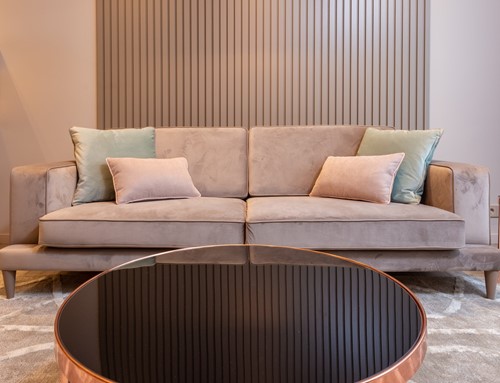
Balance and symmetry are essential elements of interior design. Everything from the arrangement of furniture to the art on the walls can affect the symmetrical balance of the space and create entirely different aesthetics. Here is a basic guide to the different types of symmetry and balance commonly used in interior design:
Symmetrical balance is the most popular variety used by designers. It's also the easiest to achieve, whether you're working horizontally or vertically. Symmetrical balance is common in square and rectangular-shaped spaces and is a hallmark of traditional design styles.
A simple example would be two chairs separated by an accent table, or two sofas with a coffee table in between. Formal dining rooms are a perfect way to explore symmetrical balance, especially when working with architectural characteristics like windows.
Asymmetrical balance is more difficult to achieve but can make a dynamic impact. When using asymmetrical balance in interior design, the results are usually more casual. Not only does this make it a popular option for small, narrow or oddly shaped rooms, but it also lends itself to a wider variety of “informal” design styles.
An example of asymmetrical balance might be arranging heavier, larger furniture pieces all together on one side of the room, and the smaller, lighter pieces on the other. To make the room feel balanced, designers incorporate bold colors, patterns or additional decor to the lighter side.
Radial balance is often blended with both symmetrical and asymmetrical balance to add round pieces harmoniously into designs. A basic description would be objects rotated to face the same direction around one central point.
For example, a round dining table with an odd number of chairs would exhibit radial balance rather than symmetrical. Spiral staircases, round kitchen islands and circular windows on walls or front doors are other examples of radial balance in context.

Broker Profile: Pierre comes from a diverse background. His adolescent and early adult years found him working for his father, a renowned structural engineer, and his brother, an architectural designer and general contractor. His knowledge of construction design (architectural & structural) and practices is significant. He coupled his construction background with his considerable sales experience, by becoming licensed to sell real estate in Massachusetts in 1986.
Pierre is also a licensed Attorney in the Commonwealth, who formerly worked for the Massachusetts Attorney General’s office as a litigator in the Victim & Witness Assistance Division of the Family & Community Crimes Bureau, litigating cases involving victims of violent crime, and since then has had his own legal practice.
For decades, Pierre has excelled in helping buyers of real estate find that condo, single-family, multi-family, lot of lands, or commercial property they desire to buy, or by effectively marketing his clients’ properties to sell their property for the most amount of money possible. His professional background embodies the ideal combination of construction, sales, negotiating, and contract drafting, which is essential to actualizing his clients’ goals and/or dreams. He does all of this with attention to detail, integrity, and success.
Since 1995, PCR Realty has helped buyers and sellers make their transactions as successful as possible. Using a consultative approach, PCR Realty approaches each experience as a unique opportunity for its clients. As a full-service real estate brokerage firm, PCR Realty provides leading-edge services for buyers & sellers.
When it comes to successfully navigating today’s complex real estate market, you need to work with someone who has the experience and commitment to see it done right. PCR Realty excels at matching buyers to sellers. From state-of-the-art marketing to an experienced broker, PCR Realty works diligently to far exceed your expectations. PCR Realty invites you to learn more.